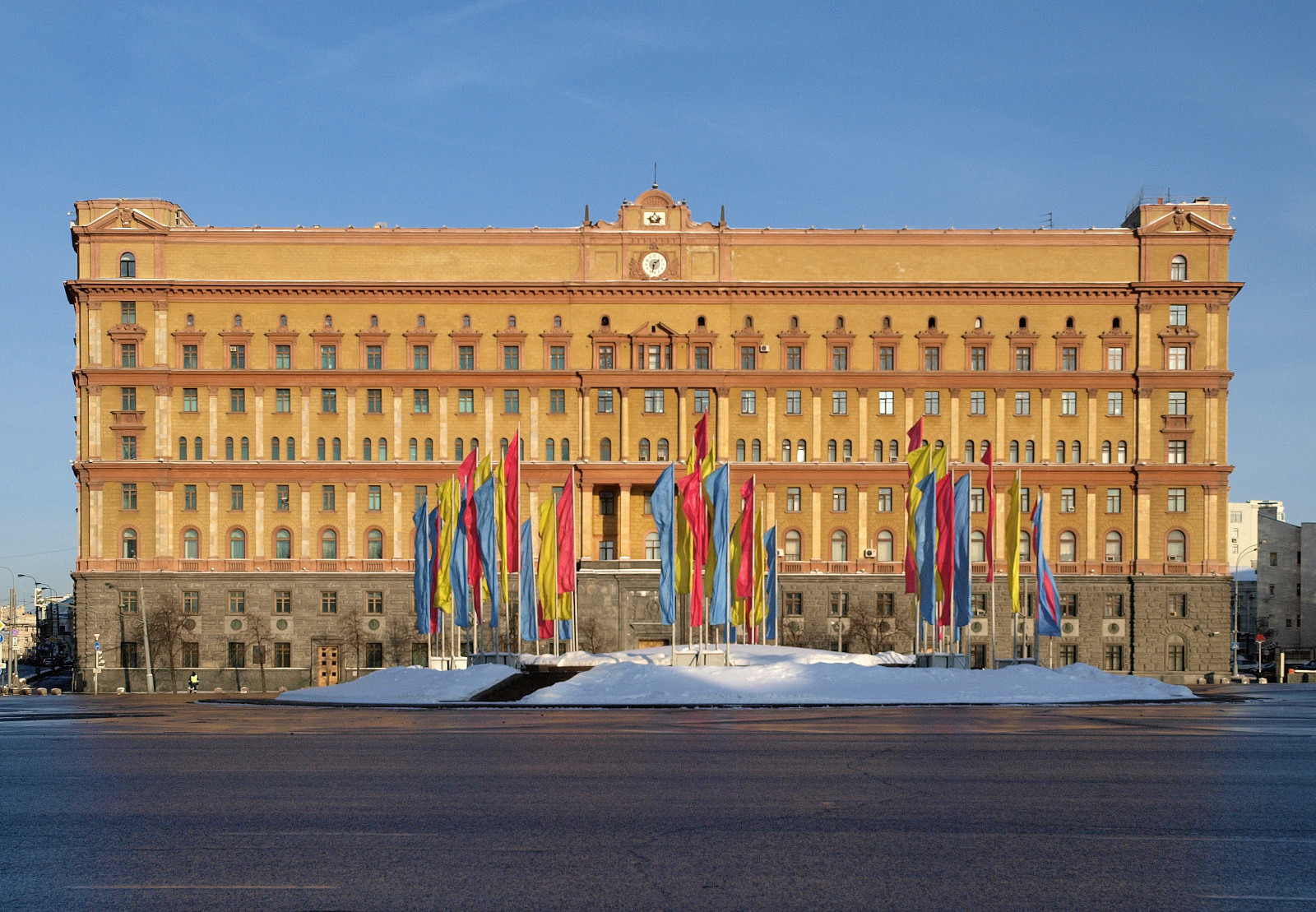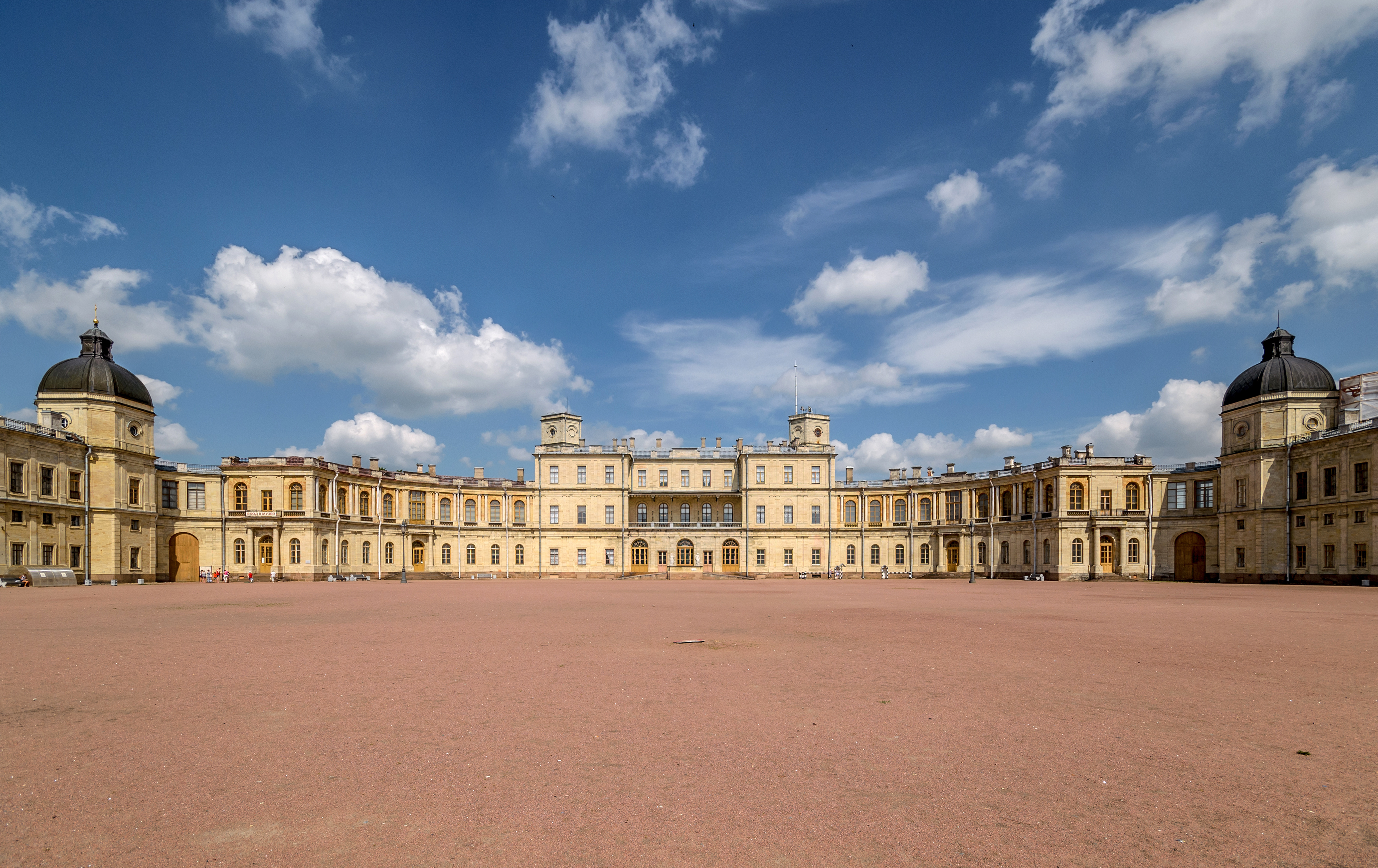|
Lebyazhye, Lomonosovsky District, Leningrad Oblast
Lebyazhye (russian: Лебя́жье; fi, Lepäsi) is an urban locality (an urban-type settlement) in Lomonosovsky District of Leningrad Oblast, Russia, located on the coast of the Gulf of Finland west of Lomonosov and east of Sosnovy Bor. Population: History It was first mentioned in 1500 under the Swedish rule as Karkila. The area was conquered by Peter the Great in the early 18th century and was given by the Tsar to Boris Sheremetev. The Sheremetev family built a manor house here in the 18th century. After the Sheremetevs, the estate was known as Lebyazhye, apparently from russian: лебедь — swan. In 1864, the railway was open, and in the 1860s, Lebyazhye started to specialize as a settlement for maritime pilots who brought the ships to Saint Petersburg. In the beginning of the 20th century, Lebyazhye was a popular summer holiday destination. Among notable people who owned houses there were Mikhail Saltykov-Shchedrin, an author, Valentin Bianki, a biologist, and ... [...More Info...] [...Related Items...] OR: [Wikipedia] [Google] [Baidu] |
Leningrad Oblast
Leningrad Oblast ( rus, Ленинградская область, Leningradskaya oblast’, lʲɪnʲɪnˈgratskəjə ˈobləsʲtʲ, , ) is a federal subject of Russia (an oblast). It was established on 1 August 1927, although it was not until 1946 that the oblast's borders had been mostly settled in their present position. The oblast was named after the city of Leningrad. In 1991, the city restored its original name, Saint Petersburg, but the oblast retains the name of Leningrad. The capital and largest city is Gatchina. The oblast overlaps the historic region of Ingria and is bordered by Finland ( Kymenlaakso and South Karelia) in the northwest and Estonia (Ida-Viru County) in the west, as well as five federal subjects of Russia: the Republic of Karelia in the northeast, Vologda Oblast in the east, Novgorod Oblast in the south, Pskov Oblast in the southwest, and the federal city of Saint Petersburg in the west. The first governor of Leningrad Oblast was Vadim Gustov (in ... [...More Info...] [...Related Items...] OR: [Wikipedia] [Google] [Baidu] |
World War II
World War II or the Second World War, often abbreviated as WWII or WW2, was a world war that lasted from 1939 to 1945. It involved the World War II by country, vast majority of the world's countries—including all of the great powers—forming two opposing military alliances: the Allies of World War II, Allies and the Axis powers. World War II was a total war that directly involved more than 100 million Military personnel, personnel from more than 30 countries. The major participants in the war threw their entire economic, industrial, and scientific capabilities behind the war effort, blurring the distinction between civilian and military resources. Air warfare of World War II, Aircraft played a major role in the conflict, enabling the strategic bombing of population centres and deploying the Atomic bombings of Hiroshima and Nagasaki, only two nuclear weapons ever used in war. World War II was by far the List of wars by death toll, deadliest conflict in hu ... [...More Info...] [...Related Items...] OR: [Wikipedia] [Google] [Baidu] |
Baltiysky Railway Station
St. Petersburg-Baltiysky (russian: Балти́йский вокза́л) is a railway station in St. Petersburg, one of the busiest railway stations in Russia by volume of suburban traffic. The station was modelled by architect Alexander Krakau after Gare de l'Est in Paris. Construction started in 1854. The station was opened on 21 July 1857 as the Peterhof railway station. Overview The station retains a glass roof over the terminal platforms and is flanked by two-storey wings. The left one used to be reserved for members of the Russian royalty who went to their palaces in Strelna, Peterhof, Oranienbaum. A glass panel on the façade still features the original clock, designed by Pavel Bure, a celebrated watchmaker to the tsar and the ice-hockey players' ancestor. In 1872, after the railway line was extended to Reval (Tallinn Tallinn () is the most populous and capital city of Estonia. Situated on a bay in north Estonia, on the shore of the Gulf of Finland of the Balt ... [...More Info...] [...Related Items...] OR: [Wikipedia] [Google] [Baidu] |
Rossiyskaya Gazeta
' (russian: Российская газета, lit. Russian Gazette) is a Russian newspaper published by the Government of Russia. The daily newspaper serves as the official government gazette of the Government of the Russian Federation, publishing government-related affairs such as official decrees, statements and documents of state bodies, the promulgation of newly approved laws, Presidential decrees, and government announcements. History ''Rossiyskaya Gazeta'' was founded in 1990 by the Supreme Soviet of the Russian SFSR during the '' glasnost'' reforms in Soviet Union, shortly before the country dissolved in 1991. ''Rossiyskaya Gazeta'' became official government newspaper of the Russian Federation, replacing ''Izvestia'' and '' Sovetskaya Rossiya'' newspapers, which were both privatized after the Soviet Union's dissolution. The role of ''Rossiyskaya Gazeta'' is determined by the Law of the Russian Federation N 5-FZ, dated 14 June 1994 and entitled "''On the Procedure ... [...More Info...] [...Related Items...] OR: [Wikipedia] [Google] [Baidu] |
Federal Security Service (Russia)
The Federal Security Service of the Russian Federation (FSB) RF; rus, Федеральная служба безопасности Российской Федерации (ФСБ России), Federal'naya sluzhba bezopasnosti Rossiyskoy Federatsii, fʲɪdʲɪˈralʲnəjə ˈsluʐbə bʲɪzɐˈpasnəstʲɪ rɐˈsʲijskəj fʲɪdʲɪˈratsɨɪ) is the principal security agency of Russia and the main successor agency to the Soviet Union's KGB; its immediate predecessor was the Federal Counterintelligence Service (FSK) which was reorganized into the FSB in 1995. The three major structural successor components of the former KGB that remain administratively independent of the FSB are the Foreign Intelligence Service (SVR), the Federal Protective Service (FSO), and the Main Directorate of Special Programs of the President of the Russian Federation (GUSP). The primary responsibilities are within the country and include counter-intelligence, internal and border security, count ... [...More Info...] [...Related Items...] OR: [Wikipedia] [Google] [Baidu] |
Border Security Zone Of Russia
A Border Security Zone in Russia is the designation of a strip of land (usually, though not always, along a Russian external border) where economic activity and access are restricted in line with the Frontier Regime Regulations set by the Federal Security Service (FSB). For foreign tourists to visit the zone a permit issued by the local FSB department is required. The restricted access zone (of width generally, but e.g., running as much as deep along the Estonian border) was established in the Soviet Union in 1934, and later expanded, at times including vast territories. In 1935–1936, in order to secure the western border of the Soviet Union, many nationalities considered unreliable ( Poles, Germans, Ingrian Finns, Estonians, Latvians) were forcibly transferred from the zone by forces of NKVD. After the dissolution of the Soviet Union in 1991, the borders of the new Russian Federation were dramatically different, but the zone was not corrected accordingly and hence effectivel ... [...More Info...] [...Related Items...] OR: [Wikipedia] [Google] [Baidu] |
Mikhail Lomonosov
Mikhail Vasilyevich Lomonosov (; russian: Михаил (Михайло) Васильевич Ломоносов, p=mʲɪxɐˈil vɐˈsʲilʲjɪvʲɪtɕ , a=Ru-Mikhail Vasilyevich Lomonosov.ogg; – ) was a Russian polymath, scientist and writer, who made important contributions to literature, education, and science. Among his discoveries were the atmosphere of Venus and the law of conservation of mass in chemical reactions. His spheres of science were natural science, chemistry, physics, mineralogy, history, art, philology, optical devices and others. The founder of modern geology,Vernadsky, V. (1911) Pamyati M.V. Lomonosova. Zaprosy zhizni, 5: 257-262 (in Russian) n memory of M.V. Lomonosov/ref> Lomonosov was also a poet and influenced the formation of the modern Russian literary language. Early life and family Lomonosov was born in the village of Mishaninskaya (later renamed Lomonosovo in his honor) in Archangelgorod Governorate, on an island not far from Kholmogory, i ... [...More Info...] [...Related Items...] OR: [Wikipedia] [Google] [Baidu] |
Leningrad Okrug
The Leningrad Okrug (russian: Ленингра́дский о́круг) was an okrug that briefly existed within the Leningrad Oblast in the Soviet Union, between 1927 and 1930. It covered the city currently known as Saint Petersburg, which was named Leningrad at the time. On 23 July 1930, the okrugs were abolished and the districts were directly subordinated to the oblast An oblast (; ; Cyrillic (in most languages, including Russian and Ukrainian): , Bulgarian: ) is a type of administrative division of Belarus, Bulgaria, Kazakhstan, Kyrgyzstan, Russia, and Ukraine, as well as the Soviet Union and the Kingdom .... References 1927 establishments in the Soviet Union Leningrad Oblast Saint Petersburg {{Russia-geo-stub ... [...More Info...] [...Related Items...] OR: [Wikipedia] [Google] [Baidu] |
Leon Trotsky
Lev Davidovich Bronstein. ( – 21 August 1940), better known as Leon Trotsky; uk, link= no, Лев Давидович Троцький; also transliterated ''Lyev'', ''Trotski'', ''Trotskij'', ''Trockij'' and ''Trotzky''. (), was a Russian Marxist revolutionary, political theorist and politician. Ideologically a Marxist, his developments to the ideology are called Trotskyism. Born to a wealthy Jewish family in Yanovka (now Bereslavka, Ukraine), Trotsky embraced Marxism after moving to Mykolaiv in 1896. In 1898, he was arrested for revolutionary activities and subsequently exiled to Siberia. He escaped from Siberia in 1902 and moved to London, where he befriended Vladimir Lenin. In 1903, he sided with Julius Martov's Mensheviks against Lenin's Bolsheviks during the Russian Social Democratic Labour Party's initial organisational split. Trotsky helped organize the failed 1905 Russian Revolution, Russian Revolution of 1905, after which he was again arrested and exiled to Siberia. ... [...More Info...] [...Related Items...] OR: [Wikipedia] [Google] [Baidu] |
Gatchina
The town of Gatchina ( rus, Га́тчина, , ˈɡatːɕɪnə, links=y) serves as the administrative center of the Gatchinsky District in Leningrad Oblast, Russia. It lies south-south-west of St. Petersburg, along the E95 highway which links Saint Petersburg and Pskov. Population: It was previously known as ''Khotchino'', ''Gatchina'' (until February 14, 1923), ''Trotsk'' (until August 2, 1929), and ''Krasnogvardeysk'' (until January 28, 1944). Gatchina, the largest town in Leningrad Oblast, is best known as the location of the Great Gatchina Palace, one of the main residences of the Russian Imperial Family during the 18th and 19th centuries. The historic center and Gatchina Palace are part of the UNESCO World Heritage Site's " Historic Centre of Saint Petersburg and Related Groups of Monuments". Another popular tourist attraction in Gatchina is the Prioratsky Palace. Gatchina has placed highly in quality-of-life rankings in Russia. History Ear ... [...More Info...] [...Related Items...] OR: [Wikipedia] [Google] [Baidu] |
Gatchinsky Uyezd
Gatchinsky (masculine), Gatchinskaya (feminine), or Gatchinskoye (neuter) may refer to: *Gatchinsky District Gatchinsky District (russian: Га́тчинский райо́н) is an administrativeOblast Law #32-oz and municipalLaw #113-oz district (raion), one of the seventeen in Leningrad Oblast, Russia. It is located in the southwestern central part of ..., a district of Leningrad Oblast, Russia *Gatchinskoye Urban Settlement, a municipal formation corresponding to Gatchinskoye Settlement Municipal Formation, an administrative division of Gatchinsky District of Leningrad Oblast, Russia {{Geodis ... [...More Info...] [...Related Items...] OR: [Wikipedia] [Google] [Baidu] |
Tsarskoselsky Uyezd
Tsarskoselsky Uyezd (''Царскосельский уезд'') was one of the subdivisions of the Saint Petersburg Governorate of the Russian Empire. It was situated in the central part of the governorate. Its administrative centre was Tsarskoye Selo (''Pushkin''). Demographics At the time of the Russian Empire Census of 1897, Tsarskoselsky Uyezd had a population of 149,845. Of these, 65.5% spoke Russian, 25.7% Finnish, 2.5% Estonian, 2.1% German, 1.9% Polish, 0.5% Yiddish, 0.5% Ukrainian, 0.4% Latvian, 0.3% Belarusian, 0.2% Lithuanian, 0.2% Tatar, 0.1% Swedish and 0.1% French French (french: français(e), link=no) may refer to: * Something of, from, or related to France ** French language, which originated in France, and its various dialects and accents ** French people, a nation and ethnic group identified with Franc ... as their native language. [...More Info...] [...Related Items...] OR: [Wikipedia] [Google] [Baidu] |





